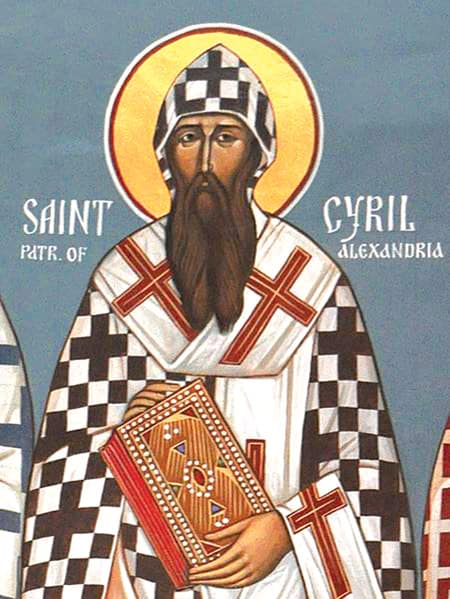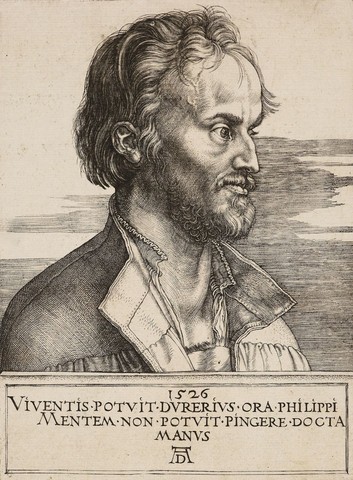In the last couple episodes we’ve set the scene for the Council of Ephesus in 431. Last time we did biographies of the two main players at the Council, Nestorius and Cyril.
We ended with a brief review of their different Christologies; that is, how they viewed the dual nature of Christ as God & Man. Let’s pick it up now with the events leading to the Council.
While Cyril was experienced in the art of ecclesiastical politics and had the support of the, what shall we call them? Let’s go with, pugilistic monks of Egypt at his back, Nestorius was more of a Donald Trump figure who eschewed politics in favor of a “My Way or the Highway attitude. Not long after arriving at his new gig as Patriarch of the Capital church at Constantinople, Nestorius entered the fray of theological controversy by weighing in on THE discussion of the day è How to describe the dual nature of Jesus. As the de-facto standard bearer of Antiochan theology, he pointedly refuted the position of Alexandrian Christology, championed by Cyril. Alexandrians referred to Mary as Theotokos, a term which is literally translated as “Bearer of God” but which had come to mean, “Mother of God.” Nestorius’ Christology aimed to keep the two natures of Christ distinct and considered this label for Mary misleading. Mary was the vessel through which the Divine Son of God, became human and the Son of Man. He preferred the title Christotokos. God is eternal, and any attempt to say God was born of Mary seemed to Nestorius to re-open a door to Arianism, since Arians had said there was a time when the Son of God did not exist. In the ensuing discussions, when the Alexandrians rejected his suggestion of Christotokos, Nestorius said he would consent to the title Theotokos for Mary if they would add the title Anthropotokos. That way Mary would be called the “Mother of God & Man.”
In 429, while sitting in his study in Alexandria, word reached Cyril of the discussions his supporters had had with Nestorius on the issue of Mary’s title. When he heard the Patriarch of Constantinople had rejected the sole designation Theotokos, he was furious and sent off a heated letter calling for Nestorius to change his views. Nestorius wasn’t the kind of person to kowtow to another, especially not the standard bearer of Alexandrian theology. He sent back and equally heated reply. And that elicited an angry retort from Cyril, which called out another barbed response from Nestorius. And so the missiles flew on parchment wings.
Both men then appealed to Pope Celestine in Rome. His response was to assemble a hasty a synod in Rome in 430 that took next to no time deciding to support the title Theotokos for Mary, against Nestorius’ position. Delighted the West had backed him, Cyril penned a long letter to Nestorius demanding he cease & desist his teaching and recant his position on the natures of Christ. This letter was more of a tome that included a dozen deliberately provocative anathemas; a formal curse by a pope or Church council, meant either to excommunicate someone or denounce a doctrine.
As the Patriarch of the Church at Alexandria, that is, it’s head bishop, Cyril had no authority to issue these anathemas. An anathema was an official ruling by the Church that said anyone who supported that which had been anathematized was consigned to hell. So when anathemas were issued, they were published far & wide. That’s why Cyril penned them. He didn’t aim to correct Nestorius. He wanted to destroy him. At least several of the 12 anathemas were gross distortions of Nestorius’ position. But Cyril wasn’t interested in accuracy. This was political theater. He aimed to carve away from his opponent any modicum of support. The anathemas made it look like Nestorius held t some cray-cray ideas about Jesus. And of course, Cyril didn’t just send the letter to Nestorius; he posted it in his blog for all to see. When the Emperor Theodosius heard of it, he hastily called a meeting in June or 431. That became the First Council of Ephesus. It was High Noon between Nestorius and Cyril.
From the outset, the entire thing was tilted in Cyril’s favor. The council was originally set for Constantinople, but Theodosius’ sister, Pulcheria, had it moved Ephesus.
Ah, Pulcheria! There was a woman, and one more major personality thrown into the mix that was the train wreck of The Council of Ephesus.
Pulcheria was the oldest surviving child of Emperor Arcadius and his wife, Empress Eudoxia. Eudoxia played a major role in the governing of the Eastern Empire alongside her husband. She cultivated her own political & religious party in the Byzantine court that had significant influence in both church and government matters. John Chrysostom and she had a long feud that saw him cast as the champion of the common people against her ostentatious displays of luxury and power. John was alternately banished and recalled during their feud.
Pulcheria was every bit her mother’s daughter in terms of her savvy use of position at court. When her father & mother passed, leaving her 7 yr old brother Theodosius II too young to rule, she became the de facto Empress as a placeholder till he turned 15. Even after, she continued to have a significant role in steering her brother’s policies.
Pulcheria eschewed her mother’s luxurious fashions in favor of a more sedate wardrobe. No one doubted her devotion to the Lord either. Under her rule the Imperial palace took on the flavor of a monastery; with regular times for prayers and fasting. She resisted her brother’s appointment of Nestorius as Patriarch and saw the brewing controversy with Cyril over the nature of Jesus as an opportunity to get rid of him. Being the political bumbler Nestorius was, he made matters worse by impugning the popular virgin Empress Pulcheria’s reputation by accusing her of having illicit lovers, removing her image from above the altar and refusing the use of one of her robes as an altar cover.
She backed Cyril, and convinced her brother to have the Council moved it to Ephesus. There was a popular shrine to Mary near the city, with many Ephesians devoted to her. Pulcheria knew Ephesus would be far more friendly to Cyril and his pals than Nestorius and his.
When the council finally gathered in June of 431 in Ephesus, some 250 bishops were in attendance. The Emperor didn’t attend, sending as his representatives, Candidian, head of his imperial guard. Candidian’s job was to ensure order and to officially opening & closing the Council under the Emperor’s authority.
The bishops trickled into Ephesus over several weeks. While waiting for the rest to get there, they did what work they could in the hope of making the work of the Council when it convened more efficient. It quickly became clear the two sides were at utter odds. Memnon, bishop of Ephesus, was of course already there of course, with 52 supporting bishops. Nestorius and his 16 bishops arrived first, escorted by Candidian and his troops. This set the Ephesians on edge, as they assumed Candidian’s presence was in support of Nestorius, though Theodosius had instructed him to remain strictly neutral. Knowing he had the support of the locals, Memnon sent out a covert word for people to be on their toes and that they might be needed to act as a deterrent to Candidian’s force. Memnon then closed the churches of the City to Nestorius.
Cyril then arrived with 50 bishops. There were no Western bishops present. The papal representatives didn’t arrive till July. A Palestinian delegation of 16 bishops arrived several days after the Council was set to open.
During the discussions that took place before the Council, Nestorius claimed Cyril’s theology did damage to a right understanding of Jesus as God. Remember that Cyril’s Christology said Jesus deity totally overwhelmed His humanity. Nestorius fired back that if Jesus’ divinity effectively negated His humanity, then Cyril would have to worship a God who was only 2 or 3 months old. By this he meant if Mary was Theotokos, mother of God, then she was mother of all His fullness, which is absurd. Cyril’s supporters seized on this to paint Nestorius as a heretic. They accused him of being an adoptionist, that is of saying Christ was a man God made divine. That charge resonated with many since it was from Nestorius’ hometown of Antioch that Paul of Samosata originally postulated Adoptionism, a heresy which had already been banned.
The Ephesians glommed onto the charge of heresy and threatened bishops friendly to Nestorius. Several abandoned him for Cyril’s side. When I say these bishops were threatened, I mean with physical violence, bodily harm.
When Cyril announced the council’s opening, Candidian stopped him, saying the Roman and Antiochean delegations hadn’t arrived. Cyril had to comply since the Council’s opening couldn’t happen with Candidian’s authorization from the Emperor.
As we’ve already seen, there really wasn’t going to be a Roman delegation; just a handful of representatives form the Pope who were instructed by him not to participate in the discussions. Celestine had already ruled on the issue and wasn’t going to have his decision debated. His reps were there just as observers who’d report back to him. The delegation from Antioch was another matter. Antioch’s bishop John knew which way the political winds blew and understood that Nestorius was likely to be declared a heretic. He did not want to be part of a Council that did so. So he delayed his arrival.
On June 22nd, 2 weeks after the Council was supposed to open, John and his 42 bishops still had not arrived. As president of the meeting, Cyril opened proceedings.
Despite 3 summons, Nestorius refused to acknowledge Cyril’s authority as president. He also protested the Council’s convening without the Antiocheans. 68 other bishops protested the Council’s opening & entered the church in protest. Then Candidian arrived and declared the assembly illegal. He asked Cyril to wait 4 more days for the Syrians to arrive. But, seeing that even the protesting bishops were now present, Cyril tricked Candidian into reading the Emperor’s decree of convocation. Candidian just thought he was TELLING the assembly what it said, not actually convening the Council. But Cyril latched onto the reading and made it the basis for the commencement of proceedings.
John and the Syrians bishops finally arrived 5 days later. Candidian informed them the Council had already commenced and had ratified Pope Celestine’s declaration of Nestorius as a heretic. Angered at having taken such a long and difficult journey only to be ignored, the Antiocheans held their own Council with Candidian presiding. This council condemned Cyril for espousing heretical views and condemned Bishop Memnon for inciting violence. Both Cyril and Memnon. Were deposed and at first, the Emperor accepted the actions of this alternative Ephesian Council. He later reversed course and endorsed the findings of the Council led by Cyril.
A couple weeks passed as the bishops who’d been in attendance at the first Council tried to decide what to do. That’s when the Papal reps arrived. So on July 10th, a meeting was held in Memnon’s house where the Pope’s letter and condemnation of Nestorius as a heretic was re-read and re-approved.
They met again the next day to compose a letter to the Emperor rehearsing what they’d done and why. It contained words from the Pope calling on him to enforce the Church’s decisions.
The bishops took a few days off, then met again to condemn John & the Syrians for holding their own Council. They were summoned to appear the next day. John didn’t only not appear, he put up a placard in the city announcing that Cyril and his supporters were heretics. So the bishops excommunicated John and 34 of his bishops.
When the Emperor received the letter from the Council, he backed away from his earlier acceptance of The Syrians counter-council finding. Nestorius was deposed and sent into exile, where he attempted to rally support against Cyril with his own unsuccessful council. Because Nestorius did have supporters among Constantinople’s nobility, Cyril was imprisoned for a spell. But he returned to his office as Patriarch of Alexandria, where for the next 2 decades his Christology dominated the theology of the Empire.
Sympathizers & supporters were now declared by the canons of the Ephesian Council as heretics. They fled the Empire for the environs of Mesopotamia and Persia, where they established themselves in a burgeoning intellectual center at Nisibis. The Persian church honored Nestorius and eventually separated itself from the West when the Persian Empire clashed with the Eastern Roman Empire.
Over the next few centuries, Nestorian missionaries planted churches in Iran, India, Central Asia, and all the way to the Far East of China. So, the decision at Ephesus ended up leading to the expansion of Christianity.
As we said at the outset of this series on the Council of Ephesus, the political squabbling of the Church at this point is simply atrocious. When denominations differ on theological issues, they mustn’t look to Ephesus as an example of how to handle them. If anything, they ought to be warned BY them.
Fortunately, church leaders realized Ephesus was a bad deal and made moves a couple decades later to set things right at Chalcedon.
So, was Nestorius a heretic? After all the shenanigans surrounding the Council, was that verdict the correct one?
While there are aspects of later Nestorianism that are aberrant, the theology espoused by Nestorius himself was sound. He may not have stated it as well as others later did, but he in effect believed the same thing. In fact, later, from exile, when he read the formulae of other’s orthodox Christology, he said that’s what he’d always believed.
Cyril’s Christology, on the other hand ended up leading to the error of monophysitism; the belief that in the Incarnation Jesus single nature as God utterly overwhelmed His humanity, sending it into a kind of spiritual coma.





